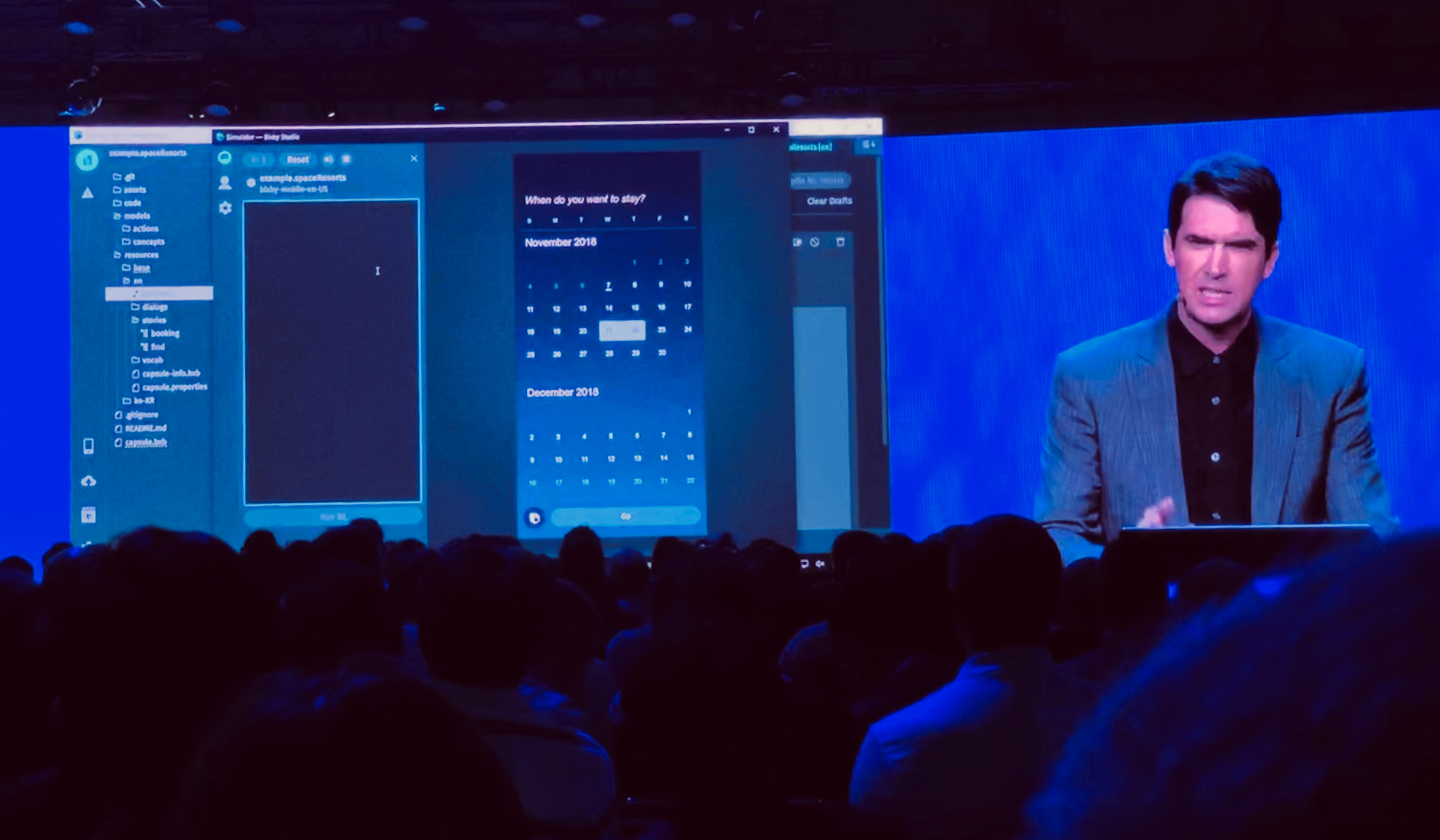

Bixby is an digital voice assistant that helps you complete both simple and complex tasks through voice or text interaction. What makes Bixby stand out from other assistants are its powerful learning capabilities – applying your preferences to make smart choices for you – and its open development platform that allows developers to create more experiences on a wide range of devices.
Over the course of my time on this project I worked on a number of different exciting projects, but my main areas of focus founding the Bixby Views Design System, bringing the Bixby Marketplace to launch, and working with partners to design and develop Capsules (Voice apps) to distribute in the Marketplace.
These assets were meticulously maintained in a Sketch UI kit which I published and distributed to the larger design organization at Samsung. Along with maintaining the source of truth for the product assets, I also wrote the detailed interaction and development guidelines behind them. These guidelines served as the documentaiton foundation on the Bixby Developers Guides.
Conversation Design and voice products call for an exceptional level of clarity and brevity in all situations. People use voice products to speed up tasks, so the experience has to either be faster or more convenient than it would be to do manually. Ideally, both. To set up a system that lets any service provider build an voice-based version of their service that achieves both of those goals is no simple task.
Designing a platform product requires making broad conceptual solutions and then distilling them into a framework to create an experience which is consistent across different modalities - like devices with or without screens as well as devices with different interaction capabilities, like TVs. In everything we did we consideed two things: How would the experience we're designing be carried out in a natural conversation, and how to we distill the fundementals of that experience into simple and patterns that can be integrated into our platform?

A conversation with Bixby is like a choreographed back-and-forth between Requests made by the user and Moments introduced by Bixby. All these interactions together are defined as a conversation model, which helps Bixby give users the best experience possible. The conversation model binds capsule models together in a way that reflects an actual conversation with an end-user.
Users can make a request by voice or typing, as well as tapping on conversation-driving followups.
When a user makes a request, Bixby is designed to get the user to a result as quickly as possible. However, along the way it might seek input and confirm choices when required.

Views is the design system that Bixby runs on. It allows developers to construct user interfaces and build a structure around the experience.
From solo shops to mega corps, anyone with a vision can pick up our easy-to-use developer tool and build voice and touch experiences for Bixby. Since anyone can build anything, we needed to put in place a system that could handle anything.
Capsules can be discovered and enabled through the Bixby Marketplace.

The Views system was released at the 2018 Samsung Developer Conference (SDC) in San Francisco, along with the entire newly-designed Bixby product, and shipped to all new Note 9 devices. It's since continued to grow and shape the product on multiple flagship devices, like the Galaxy Z Flip, Galaxy Gear watch, Samsung Smart Fridges, and some TV models.
